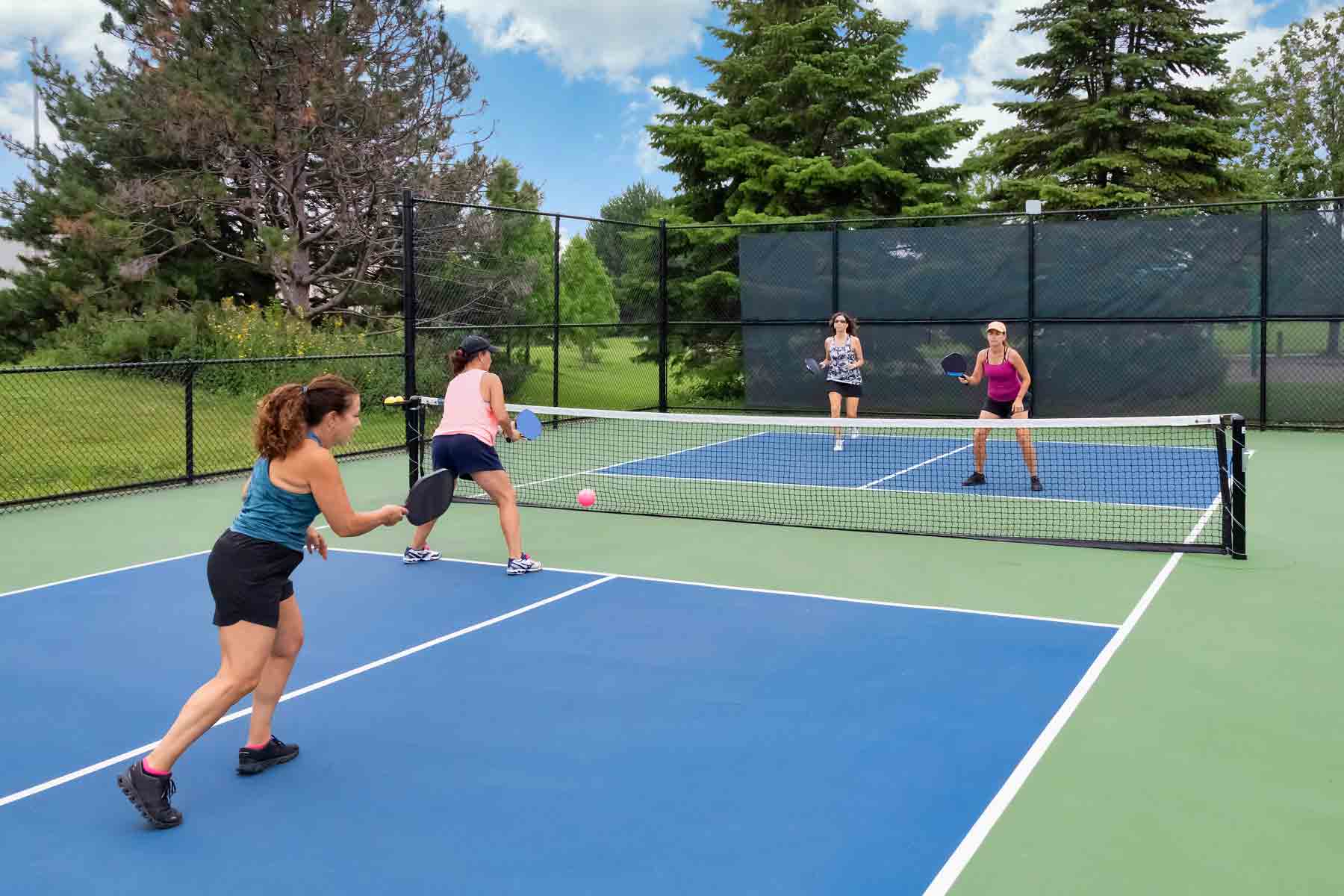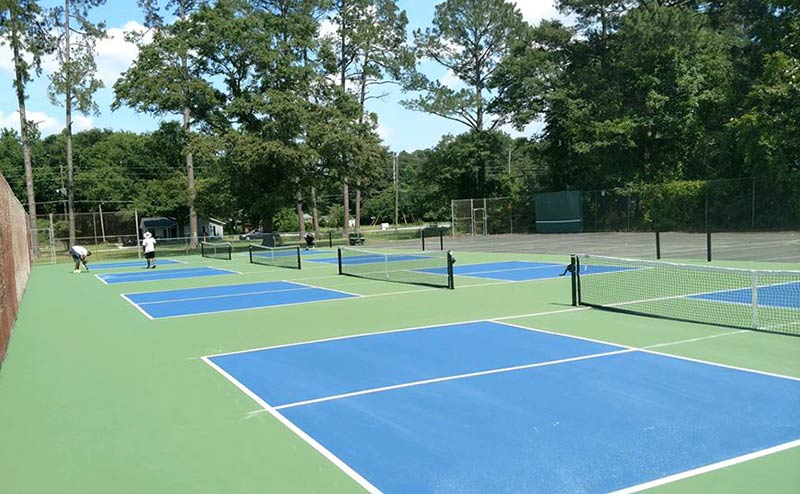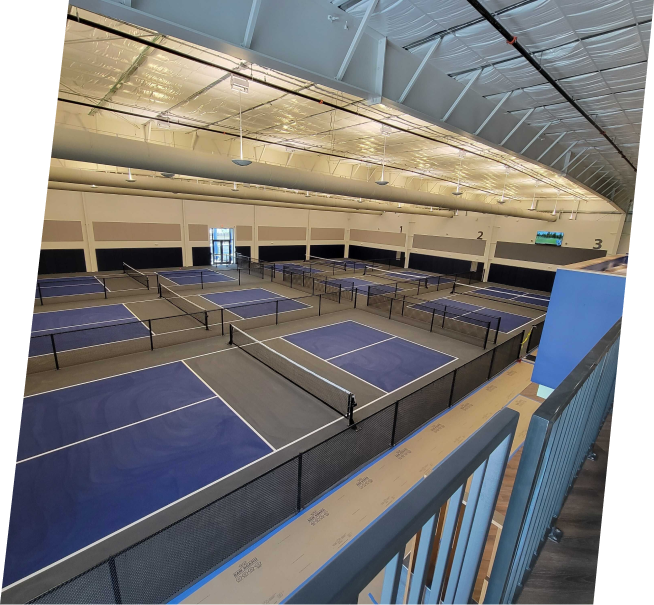Why Purchasing a Proficient Pickleball Court Contractor is Important for Your Sports Complex
Why Purchasing a Proficient Pickleball Court Contractor is Important for Your Sports Complex
Blog Article
A Comprehensive Guide to Creating the Perfect Pickleball Court for All Skill Levels
Designing a pickleball court that provides to gamers of differing ability levels necessitates a complex strategy, encompassing vital components such as court measurements, surface area materials, and ease of access features. What details considerations must be prioritized to make sure an effective implementation?

Comprehending Court Dimensions
Recognizing the measurements of a pickleball court is critical for both developers and gamers, as these specs ensure a regular and fair playing experience. A basic pickleball court determines 20 feet vast by 44 feet long for both songs and increases play. The court is split into two equal halves by a web that stands 36 inches high at the sidelines and 34 inches at the facility.
Secret functions of the court include the non-volley area, typically referred to as the "cooking area," which expands 7 feet from the internet on both sides. This area is important for managing gamer movement and volleying, guaranteeing tactical play. Additionally, the solution locations on each side of the court are necessary, gauging 10 feet large and 15 feet deep, designed to fit correct offering methods.
Surrounding the court, a location of at the very least 10 feet must be designated as the safety zone, permitting gamers ample space to relocate and avoid injuries during play. Sticking to these dimensions not just cultivates reasonable competition yet likewise advertises safety and enjoyment for all participants, making it vital for any pickleball court layout.
Choosing the Right Surface Area
The selection of playing surface area for a pickleball court significantly affects the game's characteristics and gamer experience. Choosing the appropriate product is important for ensuring gamer safety and security, comfort, and efficiency. Usual surface areas include asphalt, concrete, and specialized sports flooring.
Asphalt is a popular option as a result of its cost and sturdiness. It supplies a regular playing surface area however can be difficult on joints over extended play. Concrete, while similar in toughness, uses minimal flexibility, possibly leading to enhanced influence on players' bodies.
For a more supported experience, many facilities select specialized sporting activities floor covering, such as synthetic surfaces or modular tiles. These products often include shock-absorbing residential or commercial properties, decreasing the threat of injuries and improving player convenience. Such surface areas can enhance sphere bounce consistency, which is important for reasonable play.
When picking a surface, consider elements such as climate, maintenance needs, and the strength of play. A well-chosen surface area not just enhances gameplay but additionally adds to the durability of the court itself. Inevitably, comprehending the nuances of different materials will aid in producing an optimal pickleball environment customized to various ability degrees.
Ideal Court Design
An optimum court design is vital for making best use of both gamer efficiency and viewer enjoyment in pickleball. The measurements of a common pickleball court are 20 feet vast by 44 feet long for doubles play, maintaining a clear boundary that enhances gameplay. The internet, placed at 36 inches high at the sidelines and 34 inches in the facility, is essential for keeping the dynamics of the game.
Integrating assigned locations around the court for players to move freely is essential. A minimum of 10 feet of clearance on all sides of the court is suggested to prevent collisions and supply room for spectators. Furthermore, positioning plays a substantial duty; the court ought to ideally be aligned north-south to decrease the effect of sun glow on players throughout optimal hours.
Efficient spectator placement is equally essential. Raised seeing bleachers or locations placed behind the sidelines can enhance the experience while ensuring safety. Finally, clear and noticeable court markings help in gameplay, with contrasting shades for limits and non-volley zones that delineate vital locations for players. Overall, a well-designed court design cultivates an interesting environment for both gamers and spectators.

Access Factors To Consider
When making a pickleball court, guaranteeing accessibility for all gamers, including those with handicaps, is paramount. An attentively made court can cultivate inclusivity and urge participation from individuals of varying capacities.

Accessibility paths to the court must additionally be very carefully my website prepared. Make certain that pathways causing the court are wide sufficient for mobility device customers and are geared up with ramps where necessary. Signage ought to be large and clear enough to be quickly checked out.
In addition, seating locations should be made to enable very easy accessibility to and from the court. This consists of providing marked rooms for spectators who may have wheelchair difficulties.
Finally, make sure that washroom centers close-by fulfill ease of access standards. By visite site thinking about these aspects, you can develop a pickleball court that rates and functional for everybody, thereby promoting a dynamic and varied area of players.
Upkeep and Upkeep
Proper maintenance and upkeep of a pickleball court are vital for ensuring optimal playing problems and prolonging the lifespan of the center. Routine evaluations should be conducted to recognize and address any type of problems or put on, such as fractures in the surface area or loosened netting. These problems, if left unattended, can adversely impact gameplay and safety and security.
Surface area maintenance is essential; courts need to be cleaned up regularly to eliminate debris, leaves, or dust that can influence grip. For hard courts, periodic pressure washing is suggested to maintain surface stability and aesthetic appeals. If your court is constructed from softer materials, such as asphalt, resurfacing or sealing may be needed to secure against weather-related wear.
Additionally, net elevation and stress ought to be examined regularly, as improper setups can change gameplay. Maintaining bordering areas, including fencing and lights, is equally essential for making certain a secure and delightful setting.
Conclusion
In verdict, the design of an optimal pickleball court requires a meticulous approach this article that includes appropriate measurements, ideal surface products, and thoughtful design. By adhering to these guidelines, the excellent pickleball court can be produced, promoting pleasure and sports advancement for gamers of varying skill degrees.
Designing a pickleball court that caters to gamers of differing skill degrees necessitates a diverse technique, incorporating vital elements such as court measurements, surface materials, and availability attributes.Comprehending the dimensions of a pickleball court is crucial for both developers and gamers, as these specifications make certain a consistent and fair having fun experience.The choice of playing surface for a pickleball court dramatically influences the video game's dynamics and player experience.An ideal court format is crucial for taking full advantage of both player efficiency and spectator pleasure in pickleball. By adhering to these standards, the ideal pickleball court can be produced, promoting enjoyment and athletic development for players of differing ability degrees.
Report this page